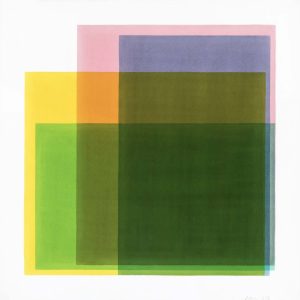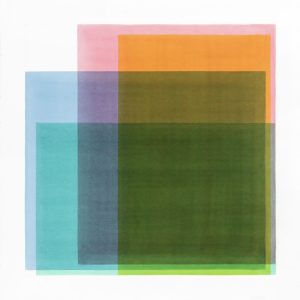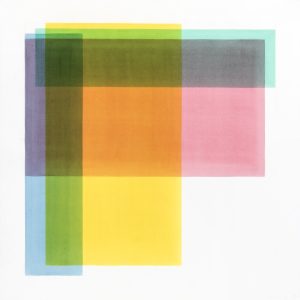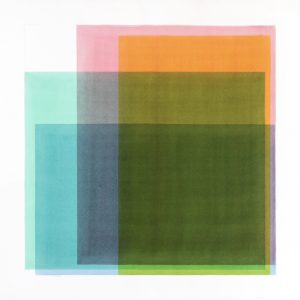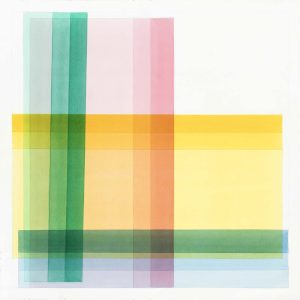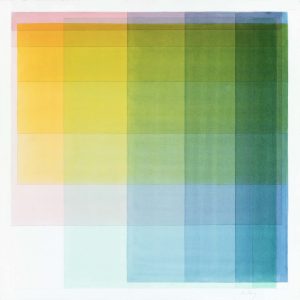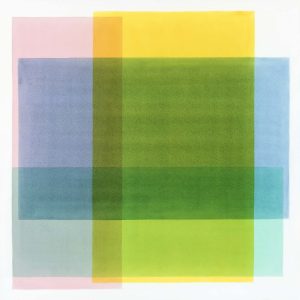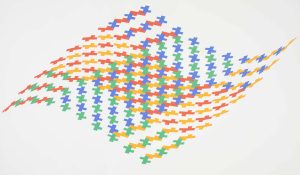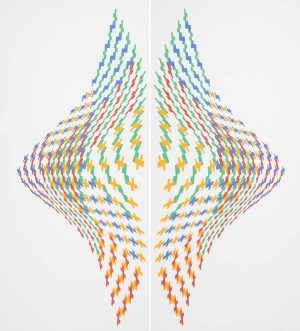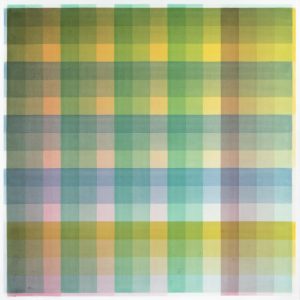
Gizella RÁKÓCZY
256N
- Year(s)
- 2009
- Technique
- watercolour on paper
- Size
- 134,5x134,5 cm
Artist's introduction
Between 1966 and 1971, Gizella Rákóczy studied at the Painting Department at the Hungarian College of Fine Arts in the class of Géza Fónyi. During her travel to Paris after graduating from college, the intact gothic glass windows of Saint-Denis Cathedral impacted her life decisively. The awe-inspiring vision of light rays, filtering through the cathedral’s stained glass windows composed by clear colours – and being projected on the floor in a kaleidoscopic way – as the manifestation of transcendence and sacrality, became a fundamental reference point in her artistic career. Although her oeuvre was always heading towards this direction, it was not only until decades later that she discovered a painting and aquarelle technique that transformed the interlacing brilliance of colours in the most adequate way. From 1976, inspired by an ancient Scottish tombstone drawing, she began to deal with four-armed spirals and their inherent numerical laws, devising a system that could be transposed into the language of combinatory painting. Her research concerning the spatial expansion of the motif and colour theory – also touching on the architectural applicability of the issue – gradually came into the focus of her fine art practice and became reflected in the increasingly complex shapes of her tempera paintings conceived from 1978 onwards. The regularities in the connection points of the spiral arms and those deduced from the resolution of the spiral nucleus began to unfold on the surface of her images, complementing and explaining each other. The initial visual systems established by the artist operated using four distinct shades of grey. Rákóczy, however, began replacing these with yellow, green and blue already at a relatively early stage. After 1998, the tempera images dealing with the numerical laws of four-armed spirals were succeeded by watercolour paintings. After brief research concerning this technique, the artist began to layer the transparent paint tones according to the mathematical formula of the Fibonacci sequence. Due to the systematic nature of her paintings and her connections to the geometric and constructivist traditions, she joined several professional organisations – including the International Symmetry Association and the Hungarian Society of Water-Colour Painters. Her analytical, structure-oriented and serial attitude, her attention to detail associate her in many ways with the painting practice of Richard Paul Lohse and Agnes Martin. Mónika Zsikla
More artworks in the artist's collection »

